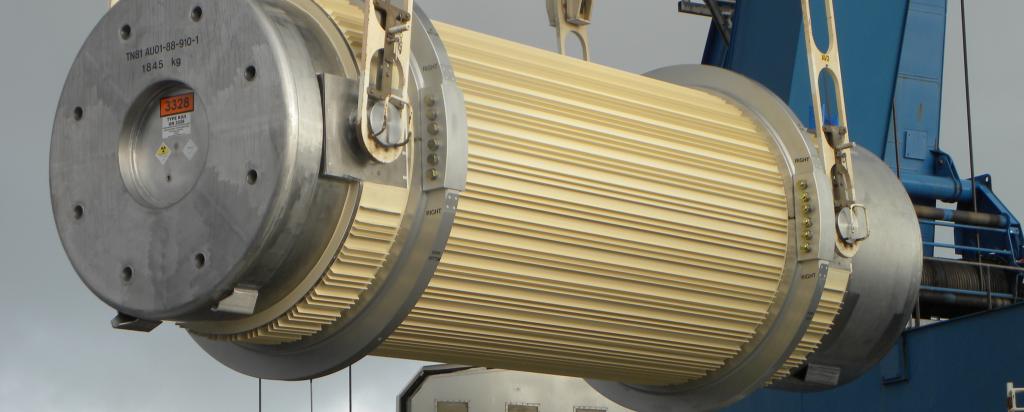
Tuesday, 21 December 2021
Australia’s nuclear agency ANSTO is continuing to lead planning efforts to repatriate what is called a TN-81 cask of intermediate-level radioactive from the United Kingdom in 2022.
One hundred and fourteen spent fuel rods from the old HIFAR nuclear reactor were sent to the UK for reprocessing in a shipment in 1996.
In line with contracts and international best practice, as the country which produced the radioactive waste, Australia will manage it now that reprocessing has been completed.
As confirmed on 17 July 2021, the residual waste from reprocessing will return for temporary storage in ANSTO’s Interim Waste Store until it can be moved to the National Radioactive Waste Management Facility.
Extensive information about all aspects of the waste, the TN-81 cask and its strong safety features is available here.
Today’s update from ANSTO coincides with an update from the UK authorities which are managing the export project.
Detailed operational planning is currently underway with NSW, Federal and international partners.
Several regulatory approvals have now been achieved, including EPBC, ARPANSA and AMSA approvals.
This includes a licence amendment which permits ANSTO to temporarily store this TN-81 cask alongside another which returned from France in 2015.
Both TN-81 casks, along with other radioactive waste at Lucas Heights and at more than 100 other locations around the country, will eventually be consolidated at the National Radioactive Waste Management Facility.
ANSTO has welcomed the recent steps towards the delivery of the national facility, including:
- Passing of the supporting legislation for the facility through the Federal Parliament.
- Acquisition of land for the facility near Kimba in South Australia.
- Appointment of a CEO for the Australian Radioactive Waste Agency which will manage the facility.
“For decades, Australians have benefited from nuclear medicine, and environmental, industrial and minerals research undertaken at Lucas Heights,” said ANSTO’s Chief Nuclear Officer, Hef Griffiths.
“Those benefits include production of millions of doses of nuclear medicine; increased profitability of our mining industry; and irradiation of silicon used in everything from fast trains to hybrid cars.
“Along with these benefits comes a responsibility for Australia to safely deal with the by-products including radioactive waste, and ANSTO has the skills and capability to assist.
“Ultimately, ANSTO must be in the business of medicine production and supporting research, not diverting more space, personnel and resources to long-term radioactive waste management, but we stand ready to assist until a national waste facility is established.”
ANSTO’s Group Executive Nuclear Operations and Nuclear Medicine Pamela Naidoo-Ameglio said that this will be a routine and safe operation.
“This will be the second repatriation project and twelfth successful transport of spent fuel or reprocessed waste which ANSTO has carried out since 1963,” Ms Naidoo-Ameglio said.
“For all of the obvious and standard security reasons, we can’t comment on the specific route or timing of this transport.”
TN-81 transport and storage casks are regularly used for transports around the world – usually with larger volumes of waste with higher levels of radioactivity.
The forged steel cask is 6.5 metres long and three metres in diameter, with walls more than 20 centimetres thick. It weighs 100 tonnes when empty.
It is designed to withstand a drop of 9 metres, temperatures above 800 degrees Celsius, an earthquake or a jet plane strike.
The cask which returns in 2022 has capacity for 28 x 500kg cannisters but will only contain four with a radiological equivalence to the spent fuel sent to the UK in the shipment in 1996.
For more information:
- A dedicated web portal with a detailed Q and A has been established to provide more information.
- A community phone line and email address has been setup for community members wanting more information about the operation. Email radioactivewaste@ansto.gov.au or call 02 9717 3090.
About ANSTO:
ANSTO leverages great science to deliver big outcomes. We partner with scientists and engineers and apply new technologies to provide real-world benefits. Our work improves human health, saves lives, builds our industries, and protects the environment.
ANSTO is the home of Australia’s most significant landmark and national infrastructure for research. Thousands of scientists from industry and academia benefit from gaining access to state-of-the-art instruments every year.